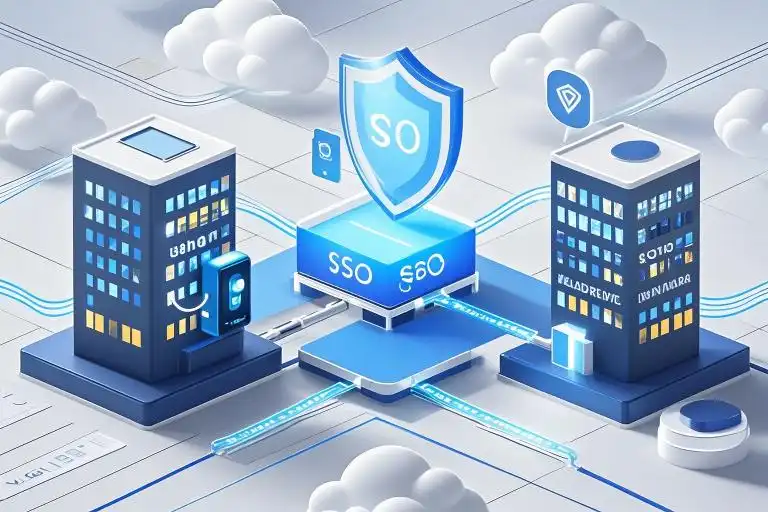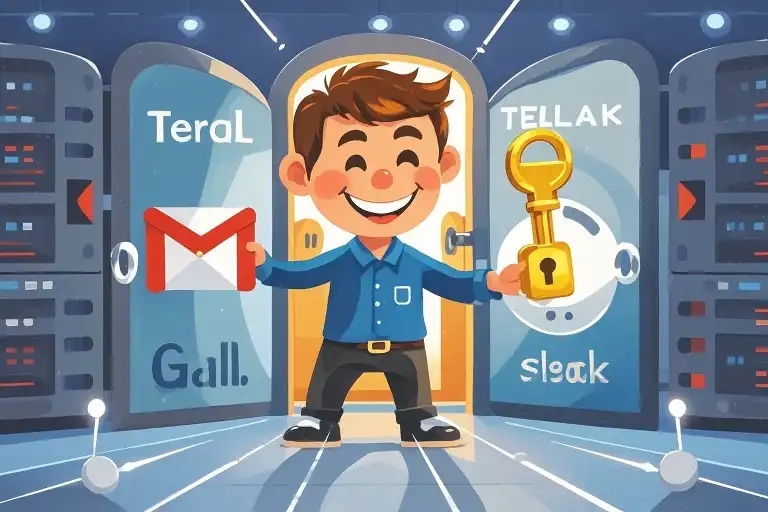You know that sinking feeling. “Was my password PetLover2023 or FidoFan#2021?” As you stare at another login screen, your coffee grows cold while IT’s phone rings nonstop with reset requests. This daily drama isn’t just annoying – it’s costing businesses $70 per password reset according to Gartner. But what if I told you there’s a forgotten 90s tech hero that could end this chaos?
When Keychains Ruled the Earth: SSO’s Surprising Origin Story
Let’s time-travel to 1997. The web was dial-up slow, “cloud” meant rain, and IT teams guarded network rooms like dragon hoards. Enter two unlikely heroes:
- LDAP: The digital phonebook keeping track of who’s who
- Active Directory: Microsoft’s master keyring for office networks
These early identity systems were like apartment building superintendents – they knew every tenant (user) and kept spare keys (passwords). Companies soon realized: “What if we made one master key that works everywhere?” Thus, enterprise SSO was born.
The SSO Dream Team: Meet Your New Security Guardians
1. The Identity Vault (IdP)
Imagine a bank vault that stores digital fingerprints instead of gold. That’s your Identity Provider. Modern versions like Okta or Azure AD use:
- 256-bit encryption (like uncrackable digital locks)
- Behavioral biometrics (recognizes your typing rhythm)
- Threat detection (spots suspicious login attempts)
Real-life magic trick: When you log into Slack, the IdP whispers to Microsoft Teams: “This human checks out – let them in!”
2. The App Squad (Service Providers)
These are your workplace tools playing nice together:
- 🏥 Hospital systems sharing patient records securely
- 🛍️ Retail apps syncing inventory across stores
- 💻 Development tools guarding code repositories
Like trusted neighbors in a gated community, they accept the IdP’s verified “ID card” instead of demanding separate paperwork.
3. The Security Courier (SSO Server)
This unsung hero works like armored truck drivers:
- Receives encrypted authentication packages
- Verifies delivery routes aren’t compromised
- Uses SAML/OAuth protocols (digital security seals)
Recent upgrades include Zero Trust verification – essentially checking ID at every corner instead of just the front gate.
Why Your CFO Will Love SSO (Yes, Really)
| Metric | Before SSO | After SSO |
|---|---|---|
| Login Time | 2.3 min | 11 sec |
| Help Desk Calls | 43/week | 6/week |
| Security Gaps | 12 found | 2 patched |
Source: 2023 Enterprise IAM Report
But the real win? Employees finally stop writing passwords on sticky notes! One healthcare client reduced phishing success by 68% simply by eliminating password reuse.
Future-Proofing Your SSO Strategy
- Biometric Ballet
Fingerprint scanners and facial recognition are becoming the new “username/password.” Pro tip: Combine with liveness detection to stop photo hacks. - Blockchain Bodyguards
Emerging decentralized identity systems let users control their digital credentials like cryptocurrency wallets – no central vault needed. - AI Watchdogs
Machine learning models now detect suspicious patterns:
⚠️ Logging in from Tokyo at 2AM?
⚠️ Downloading 500 files in 3 minutes?
Your SSO system can trigger extra checks or temporary lockdowns.
Your Action Plan (No Tech Jargon Required)
- Start Small
Begin with low-risk apps like internal wikis before moving to critical systems. - Phrasebook Approach
Learn three key terms:
- Federation: Apps agreeing to trust each other
- MFA: Extra login checks (like SMS codes)
- SCIM: Automatic user provisioning
- Security Fire Drills
Run quarterly simulations:
🔍 Test emergency access revocation
🔍 Practice breach containment steps
“SSO isn’t about technology – it’s about restoring workday sanity,” says Maria Gonzalez, CTO at HealthFirst. “When nurses stopped memorizing 12 passwords, patient care improved faster than our ROI metrics.”
Ready to quiet the password chaos? Your first step: Bookmark this guide and share it with that colleague still using “Password123”. Tomorrow’s login experience could be smoother than your morning latte.



